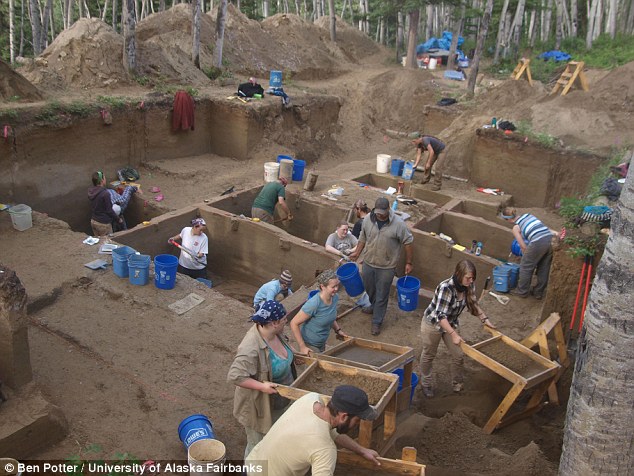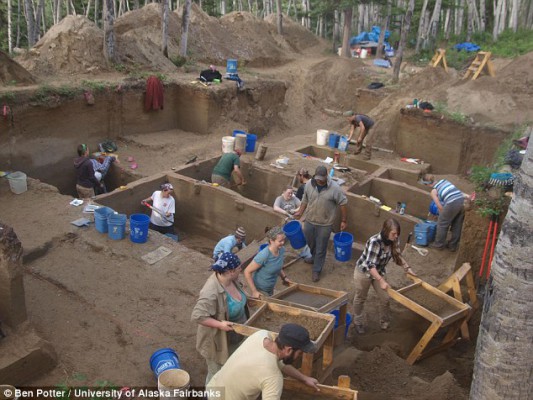This discovery is exciting as it is the only known burial of multiple bodies for this early Ice Age period, as well as being the earliest find of human remains in North America. Ben Potter, an archaeologist at the University of Alaska, Fairbanks, and the leader of the excavations at the site, explained that the infants were buried next to each other and covered with a single layer of ochre. It is assumed that the ochre was part of a burial practice.
This find was so intriguing that tests were run to try and determine the babies’ DNA. Justin Tackney, a biological anthropologist at the University of Utah, Salt Lake City, worked with a team of biologists who succeeded in isolating the mitochondrial DNA from both children. Mitochondrial DNA is inherited only from the mother, so it can be used by anthropologists to trace the maternal line from these ancestors to modern day people. Unfortunately, the same does not apply to the paternal line, so it is not possible to indicate the paternal descendants.
Today’s Native Americans belong to five major genetic groups (A, B, C, D, and X). The infants were dubbed USR1 and USR2 – it was found that USR1 came from the C1b group and USR2 came from the B2 group. Researchers estimate the C1b sub-group emerged around 12,800 years ago and the B2 group around 12,000 years ago. These findings support a theory that Native American peoples lived in the far north of the continent before they made their way south to their current habitat. This theory is based on a model called the ‘Beringian Standstill Model’, which postulates that the prehistoric North Americans crossed the Bering Land Bridge from Asia into North America in one wave, where they settled for thousands of years before the retreat of the Ice Age meant they could move south. During this time the genetic markers found today emerged in peoples that were living together. This is contrary to the model that postulates that people crossed the land bridge in waves; if this had been the case the genetic markers would have evolved differently.
The study of genetics and the origins of peoples is a fascinating subject and questions invariably arise as to why the five lineages do not show up equally across the continent, and why is there very little diversification in DNA in the far north? These questions can be answered, to a degree, by normal human migration patterns, as well as peoples’ ability to remain settled and establish vibrant communities that survive for many generations.
Lineage C1 from one baby is found, today, among the Pima and Hualapai peoples of Arizona and the Delta Yuman of California. She is also the ancestor of peoples as far away as Bolivia and Puerto Rico.
B2 is an ancestor of around thirty seven tribes throughout America. The most common are the Yakama, Wishram, Northern Paiute-Shoshoni, Navajo, Hualapai, and Jemez in North America and the Quecha and Aymara in Peru.
These two little souls that were so carefully interred by the sorrowful mothers, have provided science with many markers that help in trying to determine where the first American peoples came from, how they arrived in America, and how they lived their lives. This is a huge contribution to the knowledge base of modern humans from two tiny, ancient miracles.

